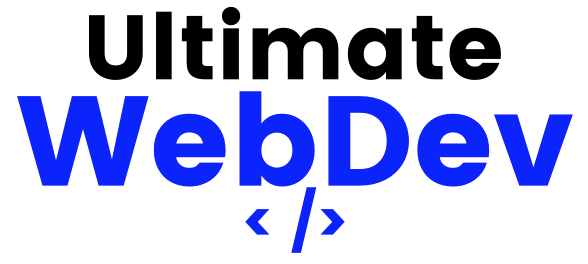Bootstrap, the open-source front-end framework, has played a pivotal role in shaping the web development landscape. From its humble beginnings to its current status as a cornerstone of web design, Bootstrap has evolved significantly across various versions. In this comprehensive guide, we’ll embark on a journey through the Bootstrap universe, exploring the major versions and their significant contributions to web development.
1. Bootstrap 2: The Humble Beginnings (2011)
Bootstrap was initially released by Twitter as an internal tool for their developers. Bootstrap 2 marked its first public release, introducing the world to a powerful and responsive front-end framework.
Key Features:
- 12-column Grid System: Bootstrap 2 introduced a flexible, 12-column grid system that became the foundation for responsive design.
- Sleek Typography: Improved typography styles and a customizable base font size allowed developers to create visually appealing websites.
- JavaScript Plugins: The framework included essential JavaScript plugins like modal dialogs, tooltips, and popovers.
- Built-in Responsiveness: Bootstrap 2 embraced responsive web design principles, ensuring that websites looked great on various devices and screen sizes.
2. Bootstrap 3: Mobile-First Revolution (2013)
Bootstrap 3 was a game-changer, focusing on mobile-first design principles and providing developers with even more tools to create responsive and visually appealing websites.
Key Features:
- Mobile-First Approach: Bootstrap 3 encouraged developers to prioritize mobile design and gradually enhance it for larger screens, improving the overall user experience.
- Customizable Components: Developers could now customize the framework’s components easily, tailoring them to fit their project’s unique needs.
- Glyphicons: Bootstrap 3 introduced Glyphicons, a set of iconic fonts that added a touch of visual flair to websites.
- Improved Grid System: The grid system received enhancements, including the ability to nest columns and apply offset classes.
- JavaScript Rewritten in ECMAScript 5: The JavaScript codebase was rewritten in ECMAScript 5, making it more modular and maintainable.
3. Bootstrap 4: A New Era (2018)
Bootstrap 4 brought significant changes and modernized the framework to meet the evolving needs of web development. It embraced the latest web standards and introduced new components.
Key Features:
- Sass Support: Bootstrap 4 embraced Sass (Syntactically Awesome Style Sheets), making it easier for developers to customize the framework’s styles.
- Flexbox Grid: The grid system was rewritten with Flexbox, offering more control over layout and alignment.
- New Components: Bootstrap 4 introduced several new components, including cards, utility classes, and a refined navbar.
- Responsive Typography: It improved responsive typography with the use of relative units like
rem. - Enhanced Form Controls: Form elements received updates and improvements to help developers create better user experiences.
4. Bootstrap 5: Empowering the Future (2020)
Bootstrap 5 was a significant release that built upon the foundation of Bootstrap 4 while simplifying the framework and making it even more modern and versatile.
Key Features:
- No jQuery: Bootstrap 5 officially dropped its dependency on jQuery, emphasizing the use of vanilla JavaScript for interactions and animations.
- Customizable CSS Variables: Developers gained more control over the framework’s appearance by utilizing CSS variables.
- New Utility Classes: Bootstrap 5 introduced additional utility classes for spacing, typography, and color manipulation.
- Improved Documentation: The documentation was revamped, making it more user-friendly and developer-focused.
- Optimized for Flexbox: Bootstrap 5 continued to leverage Flexbox for layout, enhancing its flexibility and alignment capabilities.
5. Bootstrap 6: What Lies Ahead? (Expected in 2023)
As of my last knowledge update in September 2021, Bootstrap 6 was in the early development stages, with the team actively discussing potential enhancements and features. While I don’t have information on Bootstrap 6’s specific features and release timeline, I can offer some general expectations for the next major version:
Expected Enhancements:
- Continued Focus on Vanilla JavaScript: Bootstrap 6 is likely to further reduce its reliance on JavaScript libraries like jQuery, promoting the use of modern JavaScript.
- Simplified and Optimized Code: The framework may undergo code optimizations to improve performance and maintainability.
- Additional Utility Classes: Developers can anticipate more utility classes to streamline common styling tasks.
- Enhanced Accessibility: Accessibility features are expected to receive attention to ensure that Bootstrap-powered websites are inclusive and user-friendly.
- Modernized Design: Bootstrap 6 may introduce a fresh design language to keep up with evolving design trends.
Conclusion: Bootstrap’s Evolution in Web Development
The journey through Bootstrap versions illustrates the framework’s continuous adaptation to the ever-changing web development landscape. From its beginnings as an internal tool at Twitter to its current status as a versatile and powerful framework, Bootstrap has consistently empowered developers to create responsive, visually appealing, and user-friendly websites.
As Bootstrap 6 emerges and the web development ecosystem evolves, the framework’s role in shaping the web will undoubtedly continue to be significant. Whether you’re a seasoned developer or just starting your web development journey, Bootstrap remains a valuable tool in your arsenal, offering a robust foundation for crafting modern web experiences. Stay tuned for updates on Bootstrap 6 and explore how it can help you stay at the forefront of web development trends.

